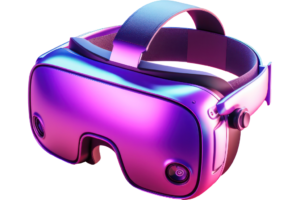Virtual Reality (VR) has long been a dream of the gaming industry—an opportunity to transport players into fully immersive digital worlds where they can interact with environments, characters, and objects as if they were truly there. Over the past decade, advancements in VR technology have brought us closer than ever to this vision. With improvements in hardware, software, artificial intelligence, and cloud computing, the future of VR gaming looks more promising than ever.
HTC Vive (2016) – Introduced room-scale VR and motion controllers.
VR gaming is not a new concept. Its roots trace back to the 1980s and 1990s when companies like Sega and Nintendo experimented with rudimentary VR technology. The Sega VR headset (1993) and Nintendo’s Virtual Boy (1995) were early attempts, but technical limitations such as low-resolution graphics and motion sickness prevented mainstream success.
Technological Advancements Shaping the Future of VR Gaming
One of the main challenges of VR is the “screen door effect,” where visible pixels reduce realism. Companies are now developing 8K resolution headsets with wider fields of view (FOV) to create ultra-realistic visuals.

The concept of the metaverse is transforming VR gaming. Companies like Meta, Microsoft, and Epic Games are developing interconnected virtual worlds where players can work, socialize, and game seamlessly.
VR esports is gaining popularity, with games like Echo VR, Pavlov VR, and Onward hosting competitive tournaments. Future advancements will make VR esports more intense and widely adopted.
Mixed Reality (MR) and Augmented Reality (AR) are merging with VR to create cross-reality experiences. Future games will allow players to switch seamlessly between real and virtual environments, blurring the lines between both worlds.
Many players experience VR motion sickness due to lag and discrepancies between physical and virtual movement. Advancements in eye-tracking, frame rates, and AI-based motion prediction will help reduce these effects.
What to Expect in the Next Decade
By 2035, VR will likely offer photo-realistic environments with AI-driven dynamic storytelling, allowing for completely personalized gaming experiences.

AI-generated worlds will create infinite and unique game experiences where no two players have the same adventure. Procedural content generation will keep games fresh indefinitely.
Elements that can help website visual composition
The true resurgence of VR began in the early 2010s with the launch of Oculus Rift in 2012. This was followed by competitors like:
VR Meets AI & Procedural Generation
With hand tracking, neural interfaces, and haptic feedback, controllers may become obsolete. Players will interact with virtual worlds just as they do in reality—by moving their bodies and using natural gestures.
Are you ready for the VR revolution? The future of gaming isn’t just about playing—it’s about experiencing. 🚀🎮
The future of Virtual Reality in gaming is filled with endless possibilities. With advancements in hardware, AI, haptics, and cloud technology, VR is on the brink of mainstream adoption. Although challenges remain, the industry is pushing forward rapidly, promising an era where gaming becomes more immersive, interactive, and life-like than ever before.
VR in Education & Training
Beyond gaming, VR will revolutionize education, corporate training, and medical simulations, making learning more interactive and engaging.
Breaking down the barriers
These advancements made VR gaming more accessible and immersive, setting the stage for the next evolution of the industry.







